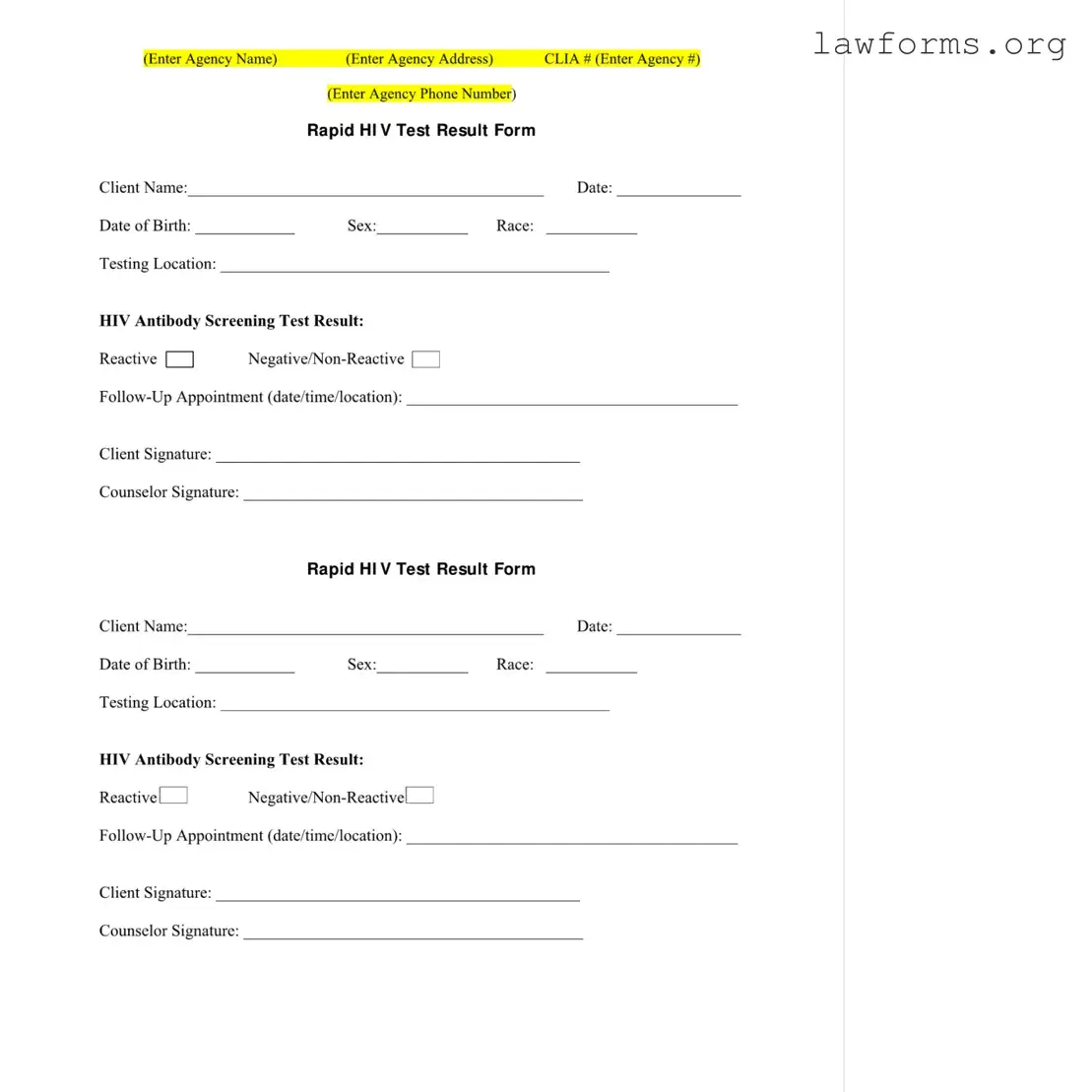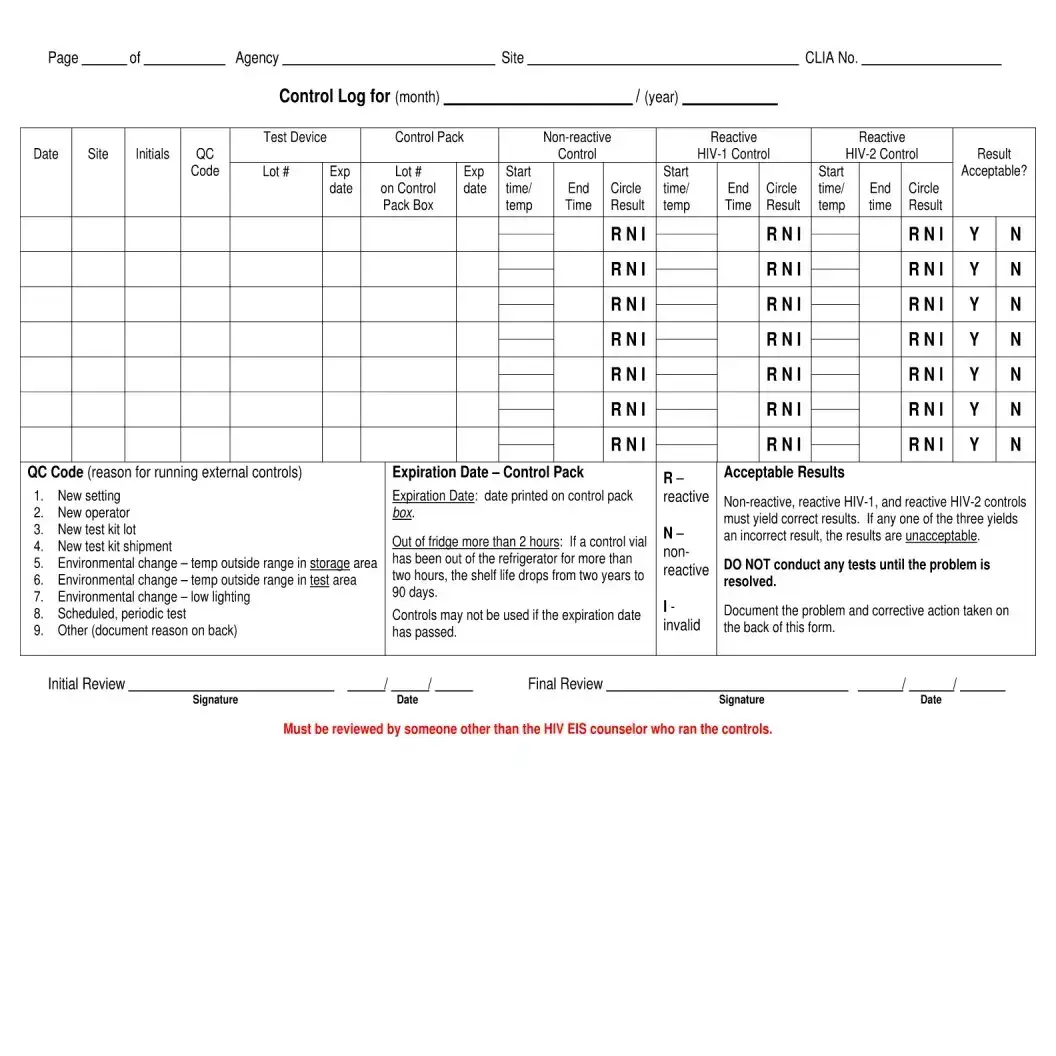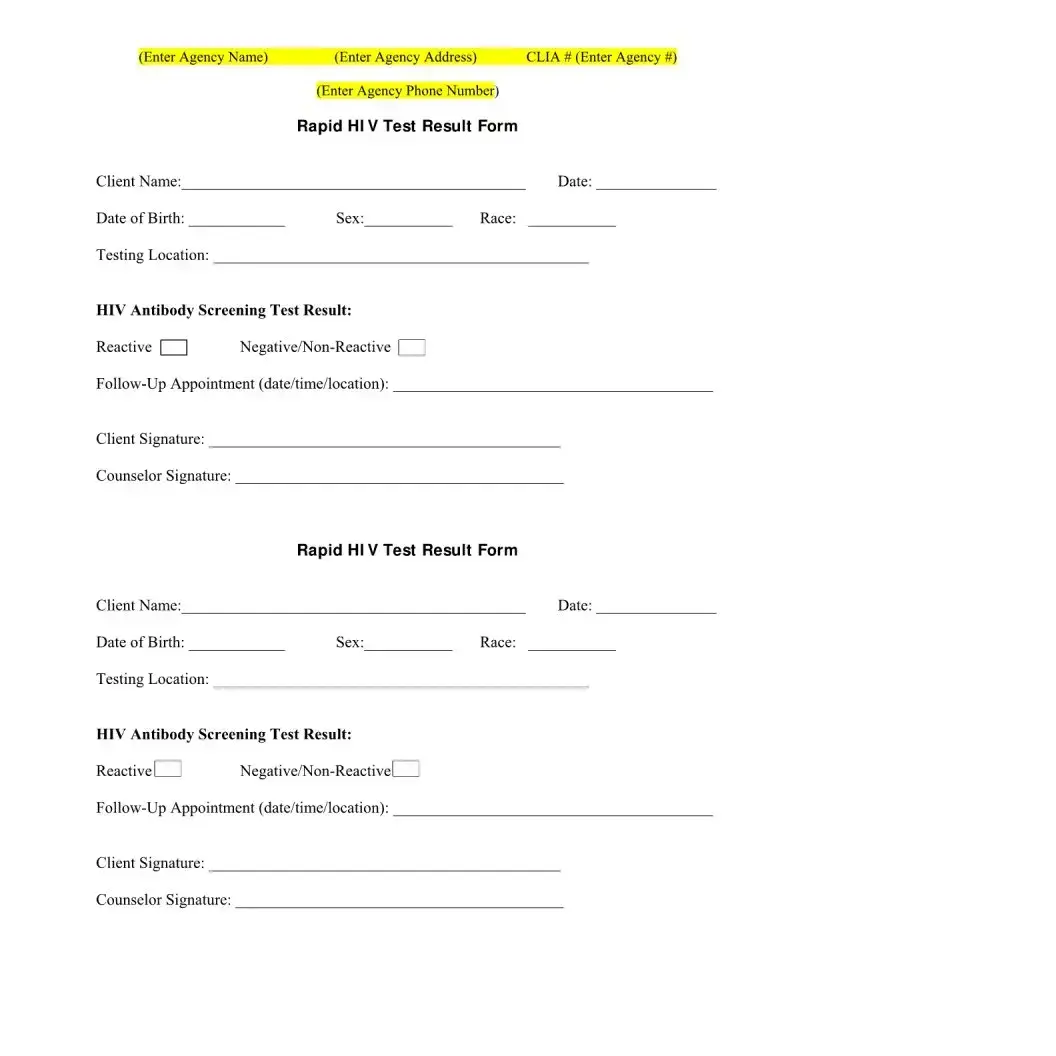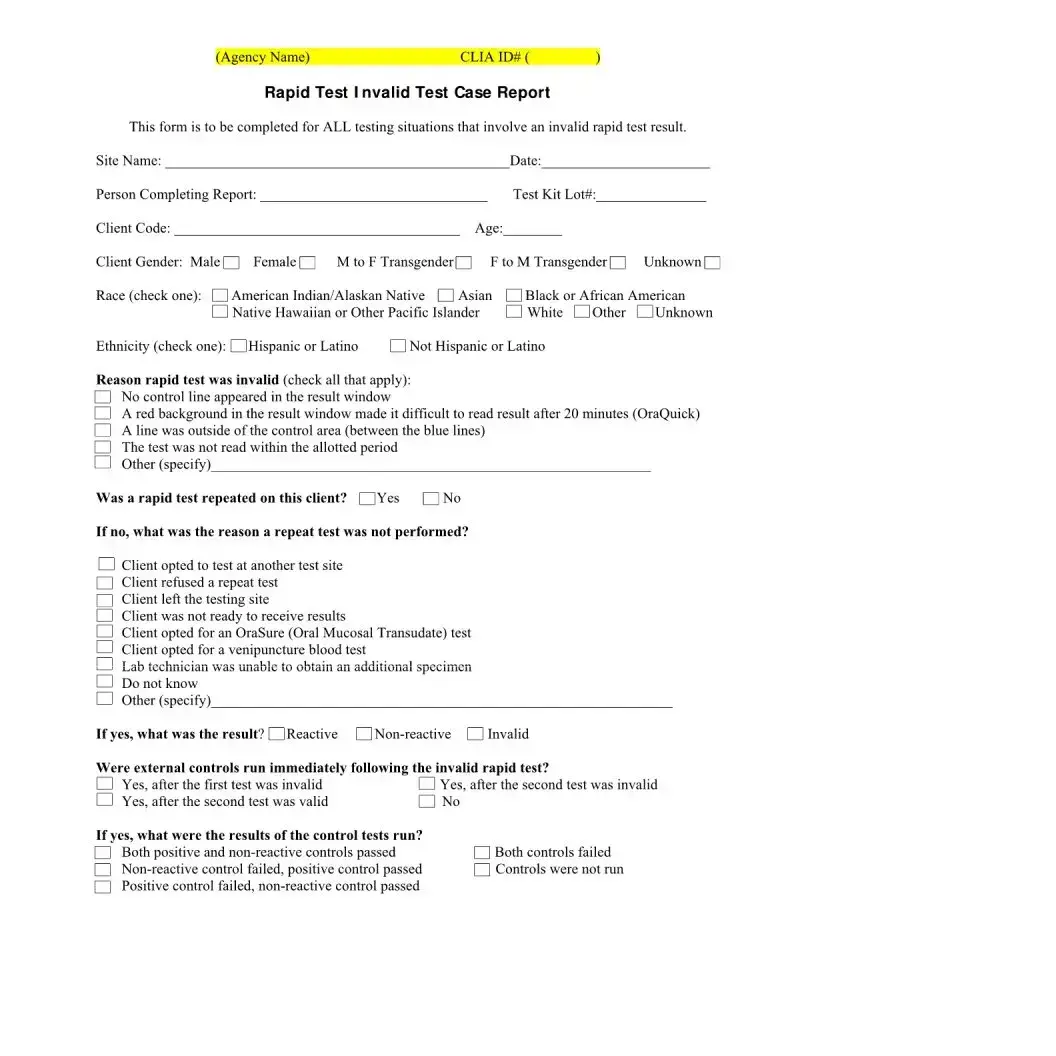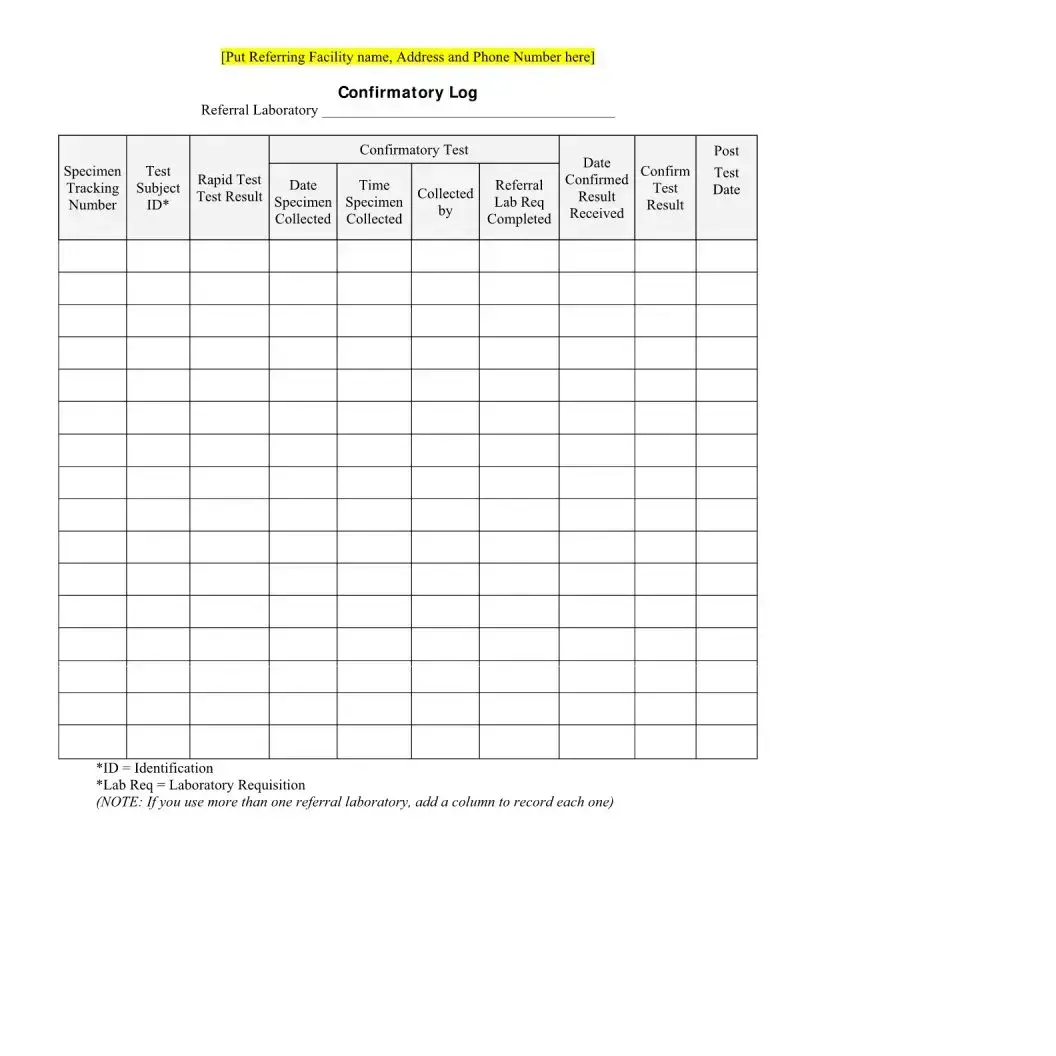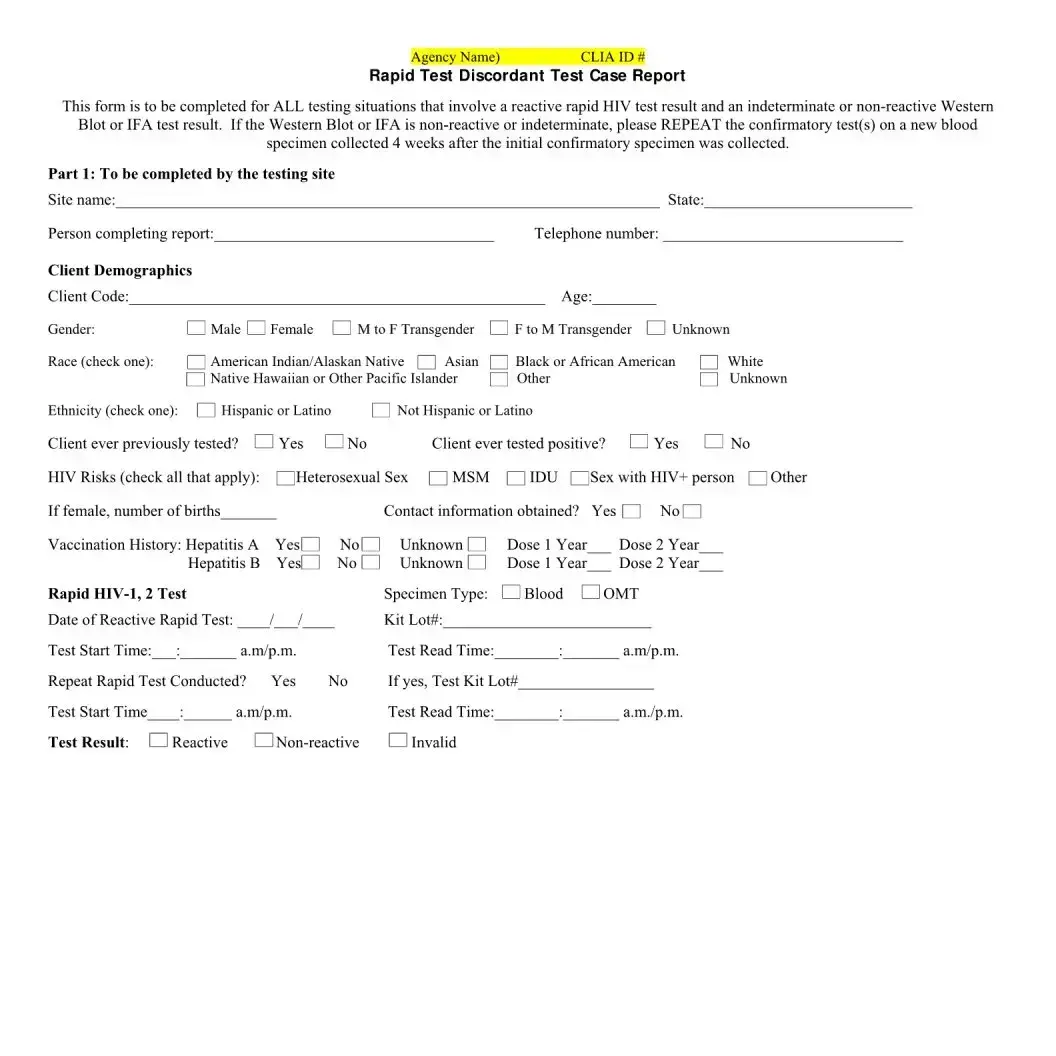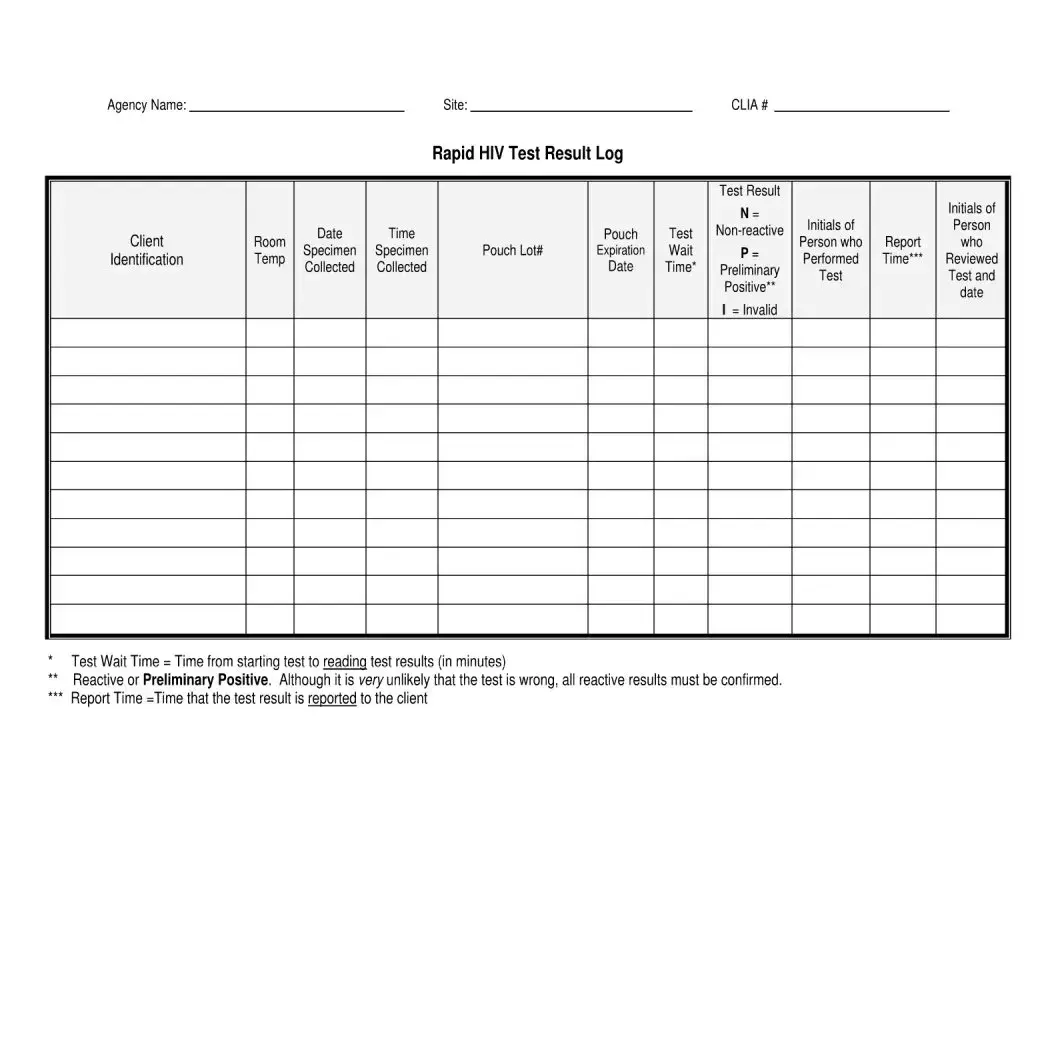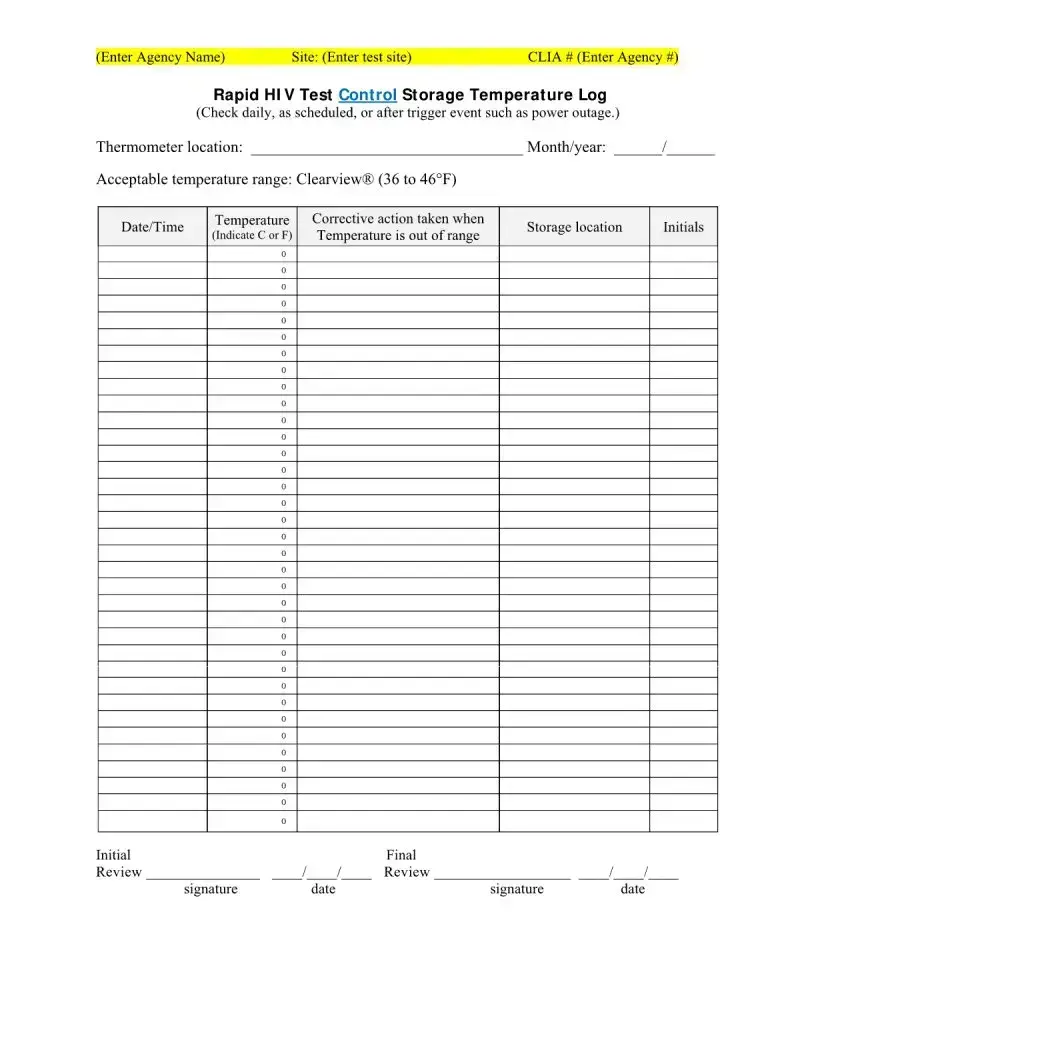Fill Out a Valid Negative Hiv Test Template
The Negative HIV Test Form is a document used to record the results of an HIV antibody screening test. It includes essential information such as the client's name, date of birth, and the testing location, along with the test results indicating whether the result is reactive or non-reactive. For those who have received a negative result, filling out this form is a crucial step in ensuring proper follow-up and care; click the button below to get started.
Customize Document Online
